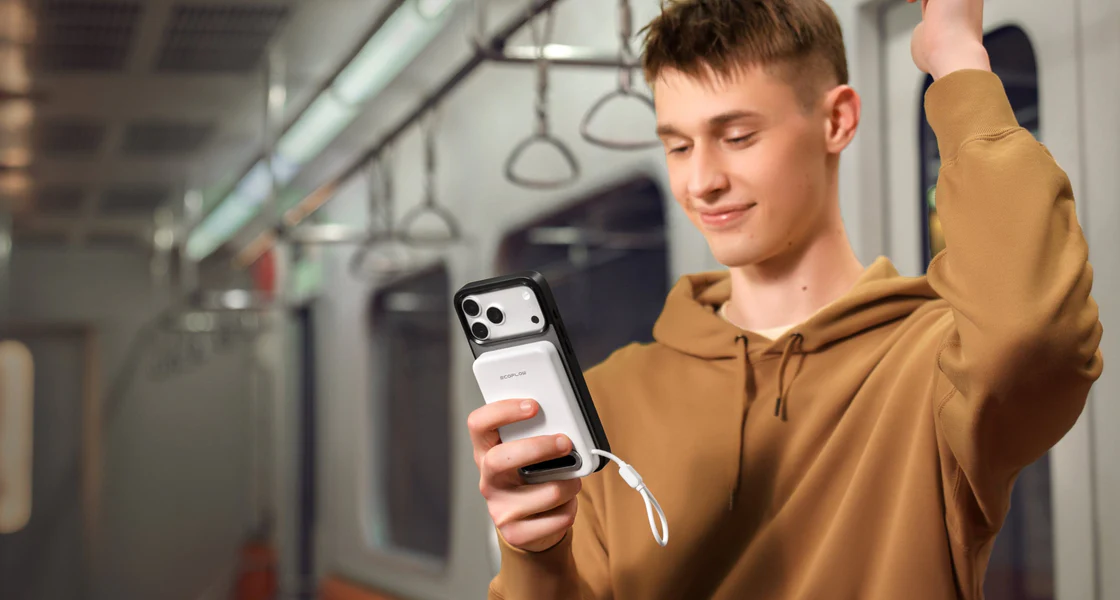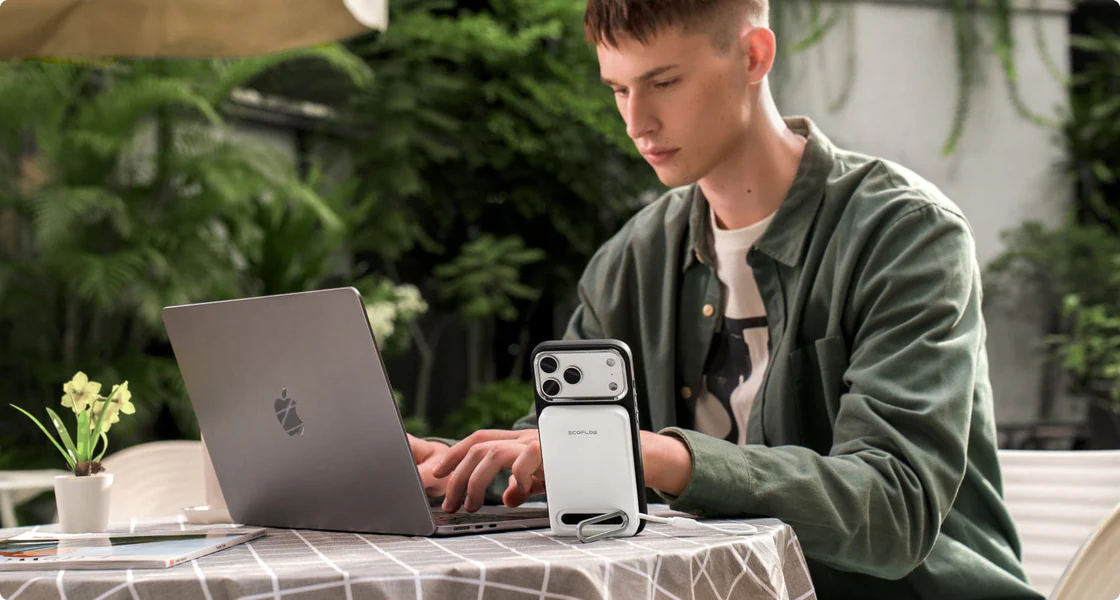How to Choose the Best Portable Power Bank for Performance and Comfort
Finding the best portable power bank means balancing battery size, charging speed, and how easy it is to carry around. You need enough power for your devices without lugging around a brick. A good portable power bank fits your routine—whether that's daily commutes or weekend adventures. The right portable power bank charger with an ergonomic design makes a real difference in everyday use.
How Do You Pick the Right Capacity for Your Portable Mobile Power Bank?
Capacity: It is indicated by the number of charging cycles you get with your devices before needing to recharge the power bank itself. It is measured in cycles.
Understanding Battery Capacity (mAH)
It means the mAh rating on the packaging isn't what you'll receive. On a 10,000mAh portable power bank, you could lose as much as 15-30% or more in the entire process due to the conversion from what your cell bank voltage is to what your phone uses. Of course, simply for usability, you'll have to calculate what you'll really have by taking 65-85% of what's advertised, based on what bank you have and what you plan to charge with it.
Cell Phone and Tablet Charging
Batteries in most smartphones have capacities ranging from 3,000mAh to 4,000mAh. With a portable charge bank like 10,000mAh, you will have enough charge for about 2 smartphones. Note that tablets require far more charging, from which an iPad with 8,000mAh capacity sucks power in one sitting. It's crucial to check battery capacity in your device settings before purchase. Calculate the sum of their capacities to meet your minimum charging needs.
Planning for Multiple Devices
Simultaneous charging for multiple devices? Just do the math. Suppose I have my phone with its 4,000mAh battery, wireless earbuds with 500mAh, and my smartwatch with 300mAh. Add these capacities together, and I have 4,800mAh in total. A charging bank with 10,000mAh capacity will provide one complete charge for all three devices. But for business travelers with multiple devices such as smartphones, tablets, or laptops, I'd recommend no less than 20,000mAh.
Balancing Power and Portability
But there's a twist: with higher capacity, there's also increased weight in your backpack. If you have a 20,000mAh portable power bank, for example, it will weigh 14 oz (400g), which is like lugging an entire container of soup. A 5,000-10,000mAh power bank is ideal for everyday adventures, which weighs 6-8 oz, while 15,000-20,000mAh is suited for weekend escapades. If you're away for a week, opt for something with 25,000mAh capacity or higher.
Think about your real usage patterns. Most people overestimate their needs and end up carrying unnecessary weight.
What Features Should the Best Portable Power Bank Have?
Features are what distinguish a solid portable power bank from one that will collect dust in your closet.
Fast Charging Protocol Support (PD, QC)
Power Delivery, or PD, and Quick Charge, or QC, slash charging times significantly. A portable power bank with PD charging capacity can charge your iPhone from 0 to 50 percent in 30 minutes. Normal charging will take more than 2 hours to reach the same level. PD is for iPhone, while QC is for Samsung smartphones. Just check what language your smartphone speaks, then choose a portable power bank with supports its language too. If not, you'll have to wait for what feels like forever for your smartphone to charge.
Multi-Port Setup and Smart Power Distribution
It also has the capacity to charge two to three ports at one time. Quality portable power banks have an automated allocation for powering devices based on their demand. On your phone, for example, it will provide an 18W charge, while on your tablet, it will provide 30W, without needing you to manually switch them. The ideal portable power bank offers USB-C charging together with USB-A on different ports.
Battery Level Display and Indicators
Four-dot displays on LEDs are not really any good. It's far better to have displays showing actual percentages. It is helpful to know whether you have 47 percent charge left in your battery or 3 percent. Some portable batteries for cell phone charging also have displays indicating charging speed, which is useful for knowing whether fast charging has begun. It's worth an extra few dollars to have an actual display screen on it.
Power Output And Charging Efficiency
Output power is what affects charging rates. 20W will charge smartphones, while 30W is enough for charging tablets. More than 65W is necessary for charging a laptop computer. It's not enough to have high efficiency; what really matters is real efficiency in real-life conditions. Reliable charging banks provide 85-90% efficiency, while less efficient models (those sold for low prices, about 70% efficient) will cause your portable power bank to heat up. Reviews pointing to real charging rates are what you have to read.
These things cost more money, but they save you from frustration every day. Buy what you'll really use, not maximum specs you won't use.


What Makes a Good Portable Power Bank Stand Out?
It’s only after several months of use that differences in quality between good and bad portable power banks become apparent.
Safety Certifications (UL, CE, FCC)
Always make sure to check for UL, CE, and FCC certification marks. These certification marks assure you that real, professional testing laboratories have evaluated the safety aspects of your portable power bank. Without certification, portable power banks have burned down houses, destroyed smartphones, and caused many other hazards. Just imagine paying five bucks for something less safe than, say, fireworks. Maybe not, really. Just buy something safer to start with.
Brand Reputation and Quality Assurance
Copycat companies charging half the price for seemingly identical power banks are taking a risk with your equipment. A guarantee for months, not years, is a sign of low quality or even a scam, notes Overkeen's reviewer, while companies with faith in their products will provide 18-24 months' warranties. A reputable portable power bank from a trusted company costs more, but it works perfectly for years, while the cheapest power banks from unknown companies stop working in six months because their capacity starts to diminish significantly.
Battery Cell Quality and Charge Cycles
Lithium polymer batteries have a longer lifespan than Lithium-ion batteries in portable devices. Excellent batteries retain an 80% charge capacity after 500 charge cycles, which is about two years in everyday use. Lower-cost batteries will decrease to 60% charge capacity in the same period. What constitutes a premium portable power bank is the use of Grade A batteries, although few companies choose to break down such information.
Real Capacity vs. Advertised Capacity
Plenty of portable, mobile power banks out-and-out lie about their capacity. A 20,000mAh capacity might be really only 16,000mAh. Consumer reviews on YouTube test these variations routinely. Reliable manufacturers come no more than 5% from what's advertised. Make note of reviews from real consumers, specifically those referencing real charge cycles—you know there's a problem if several buyers state that in a 10,000mAh bank, their smartphone is barely charged twice.
Smart Protection and Safety Features
Overcurrent Protection prevents power surge damage to your devices. Temperature Protection prevents overheating, turning off charging whenever it gets too hot. Short-circuit protection saves all your devices in case there’s an error in wiring. The best portable power bank charging device offers all these features effortlessly, with no need for you to set them up. High-end portable power banks have features like detection of foreign objects, surge protection, among others.
For example, the Qi2 EcoFlow RAPID Mag Power Bank uses V0 fireproof material and X-Cooling technology, performing 5 million daily temperature checks to keep the shell temperature below 107.6°F (42°C), better protecting phone battery health and ensuring safety during fast charging. Quality is more important than specifications on paper. Cheap cables will break faster and could end up damaging your devices.
How to Judge Comfort and Portability in a Portable Power Bank Charger?
The specs have their importance, but what’s most crucial is whether it will be comfortable to carry.
Size, Weight, and Daily Carrying
It's likely in your bag or pocket. More than 1 pound (450 grams) gets tiring after an hour in the bag. Devices less than 0.6 inches in height are pocket portable in your jacket pockets. More box-like designs with depth aren't something you want in your pocket. Taste now, avail yourself later, with something simulating its weight in your hands before purchase—a full water bottle weighs about like 20,000mAh. Encumbrance: Keep it under 12oz (340 grams).
Shape Design and Grip Comfort
Rounded corners are better than sharp corners, any day. Textured designs will stop slippage caused by excessive sweating in your hands. A matte finish will be better gripping than glossy plastic designs. Some designs for portability incorporate rubberized layers on top for improved gripping. Consider, for example, holding your smartphone in one hand, with the power bank in the other. It’s not ergonomic to have something awkward to manage while being plugged in to charge.
Cable Management and Accessories
Integrated cables provide a solution to forget my cable syndrome, although they increase the size of the device. Detachable cables provide portability, but there's always a possibility that you'll misplace them. Some designs provide small pouches to keep cables in, which could be a small detail, a big benefit. A good portable power bank shall have either cleverly integrated cables or a good carrying case. Cable organizers or velcro straps eliminate any tangles in your bag's bottom corner.
Comfort is underestimated. A portable, yet not-so-comfy, power bank for mobile devices remains in the closet, worthless no matter what its features are.


FAQ
Q1. Can I Bring My Portable Power Bank on an Airplane?
Airlines allow portable power banks under 100Wh in carry-on bags only—never in checked luggage due to fire risk. 100Wh is approximately equivalent to a 27,000mAh power bank based on the standard internal battery voltage. Units between 100-160Wh need airline approval beforehand. Anything over 160Wh is completely banned from flights. TSA agents might question larger units at security, so keep your power bank's specs handy. International flights follow similar rules, but always check your specific airline's current policy before traveling to avoid last-minute surprises.
Q2. How Long Does It Take to Recharge the Power Bank Itself?
Recharge time depends on input wattage and total capacity. A 10,000mAh portable power bank with 18W input fully charges in 3-4 hours. That same capacity with only 5W input takes a painful 8-10 hours. Bigger units naturally take longer—a 20,000mAh power bank needs 5-7 hours with fast input charging. Most people charge overnight anyway, making exact timing less critical. Look for input specs matching your wall charger's output for fastest recharging. Some newer models support 30W+ input for topping up during lunch breaks instead of overnight.
Q3. Do Portable Power Banks Work in Extreme Temperatures?
Lithium batteries hate temperature extremes and perform poorly outside comfortable ranges. Below 32°F (0°C), charging slows significantly and available capacity drops temporarily. Above 113°F (45°C), safety circuits may completely shut down charging to prevent thermal damage or fires. Store and operate between 50-86°F (10-30°C) for optimal performance and longevity. If your power bank feels uncomfortably hot or cold to touch, let it reach room temperature before charging devices to avoid permanent damage.
Conclusion
Finding the right portable power bank means matching capacity to your needs, getting useful charging features, confirming safety certifications, and ensuring comfortable daily carry. Don't buy the biggest or cheapest. Buy what fits your current routine. Check for proper certifications, test ergonomics if possible, and pick the best portable power bank from reputable brands. Your devices and daily convenience are worth the investment in quality.
To ensure the perfect balance of charging speed, safety, and portability, highly consider the Qi2 EcoFlow RAPID Mag Power Bank. It offers a super-slim profile (0.63 in.), a large 10,000mAh capacity, and 36W wired fast charging, easily meeting all your charging needs on the go.